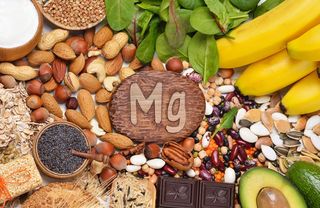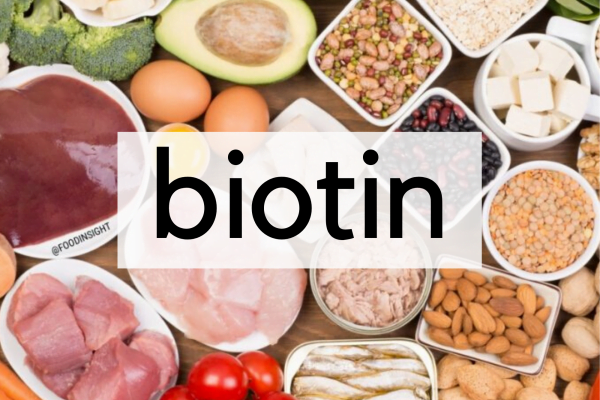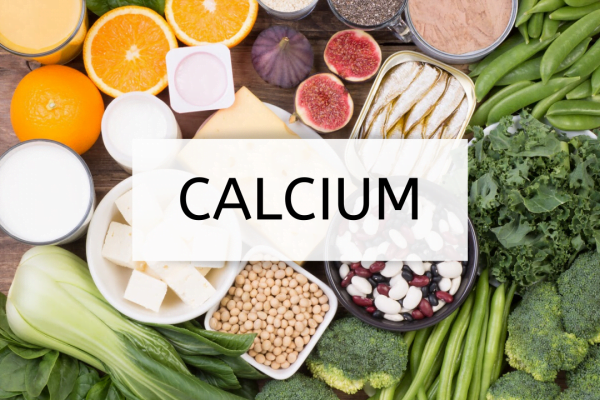This month I want to talk about Vitamin B1, or what’s also known as thiamine. It’s one of the B-vitamins that we don’t really talk about. But what does it do? Where can I get it? And why is it important?
Functions
It helps with energy production
Thiamine is important in energy production for a few different reasons. It’s important to note that the active form of thiamine is actually thiamine pyrophosphate, but we’ll just call it TPP. TPP is a coenzyme in the metabolism of carbohydrates and also involved in ATP synthesis. A quick high school biology refresher – ATP is the molecule that gives our cells energy.
Thiamine also helps in the initial steps of fatty acid and sterol production. Fatty acids are essential for health. They store energy, act as messengers for our nerves, and help proteins function correctly. Sterols, like cholesterol, is important for cell membrane structure. They also act as a precursor for steroid hormones like estrogens and androgens.
It helps nerve function
Thiamine is such an important vitamin for our nervous system. Thiamine helps synthesize a vital neurotransmitter, known as acetylcholine. Acetylcholine is responsible for transmitting messages between our nerves and our muscles. See how your thumb is scrolling through Instagram right now? That’s thanks to acetylcholine.
Thiamine also helps develop the fat-like structure around our nerves, called the myelin sheath. Think of it like a layer of insulation around our brain and spinal cord nerves. The myelin sheath helps transmit electrical (or nervous) signals throughout our body. People with conditions like multiple sclerosis (MS) often have damaged myelin sheaths which inhibits proper nerve function. Unfortunately, this impaired nerve function often leaves people with MS with weak muscles or poor coordination.
Sources
Thiamine is found primarily in many grain products, such as the germ and bran of wheat and rice husks. It’s also found in high amounts in avocados. It’s found in modest amounts in oats, millet and some vegetables like spinach and cauliflower. There are also trace amounts in most nuts, sunflower seeds and legumes.
Unfortunately, the processing of grain products removes a lot of the thiamine content. Processing includes things like milling of grains and refining flours. The best way to get thiamine through diet is by eating whole, unprocessed foods like whole grain breads, brown rice, or even enriched wheat that has the thiamine added back in.
Intake and Deficiency
Vitamin B1 deficiency can become serious over time. This condition is known as beriberi. There are 3 main types of beriberi, depending on severity.
1. Childhood beriberi – stunts the growth of infants and is usually accompanied by a high pitch scream and a rapid heartbeat.
2. Wet beriberi – expressed as edema (swelling) of the feet and legs that may spread elsewhere throughout the body and is also associated with decreased heart function.
3. Dry beriberi – shown as weight loss, muscle wasting and nerve degeneration.
There is also a fourth form of thiamine deficiency called Wernicke-Korsakoff Syndrome. This is associated with the degeneration of the brain and leaves those affected generally disoriented and with an impaired ability to walk. This syndrome is typically seen in people who have suffered from years of alcoholism.
Symptoms of thiamine deficiency typically progress slowly. The first symptoms are fatigue and instability. This leads to confusion, loss of memory, depression, clumsiness, insomnia, GI tract disturbances, abdominal pain, constipation, slow heart rate, or burning chest pain. If left untreated, symptoms include irregular heartbeat, prickling leg sensation and tender and atrophied muscles.
The recommended daily amount depends on age and gender. I’ve included a chart below with the RDAs for each age group.
| Age | Daily Amount |
| infants, 0-6 months infants, 7-12 months children, 1-3 years children, 4-8 years males, 9-13 years males, 14+ years females, 9-13 years females, 14+ years pregnant females, any age lactating females, any age | 200mcg 300mcg 500mcg 600mcg 900mcg 1.2mg 900mg 1.1mg 1.4mg 1.5mg |
It is also important to note that people who smoke, drink alcohol, consume caffeine or tannins from coffee and/or tea, who are pregnant, lactating or taking birth control pills need more thiamin as all of these activities deplete the body of vitamin B1. It is also important to note that while we do store some thiamine in our liver, heart and kidneys, these stores do not last long and therefore thiamine should be ingested daily.
The Takeaway
Vitamin B1, or thiamine, is just one of the crucial B-vitamins. This group of vitamins is essential for optimal health, but unfortunately, they are water soluble and any excess is excreted through urine or sweat. In fact, people who are prone to mosquito bites (me!) could benefit from ingesting large amounts of B1 prior to going outside during mosquito season. Thiamine gives off an unpleasant smell to mosquitos and acts as a natural repellant! I will definitely be testing out this theory this summer. I also want to throw it out there that there have been no reported cases to date of any toxicity from excess thiamin intake, so it’s generally really safe. As I said, we pee out any excess. So, my advice to you is eat that whole grain toast and some avocado! Your nerves will appreciate it.
If you liked this post, don’t forget to subscribe to my newsletter and be sure to share it to all your friends!




